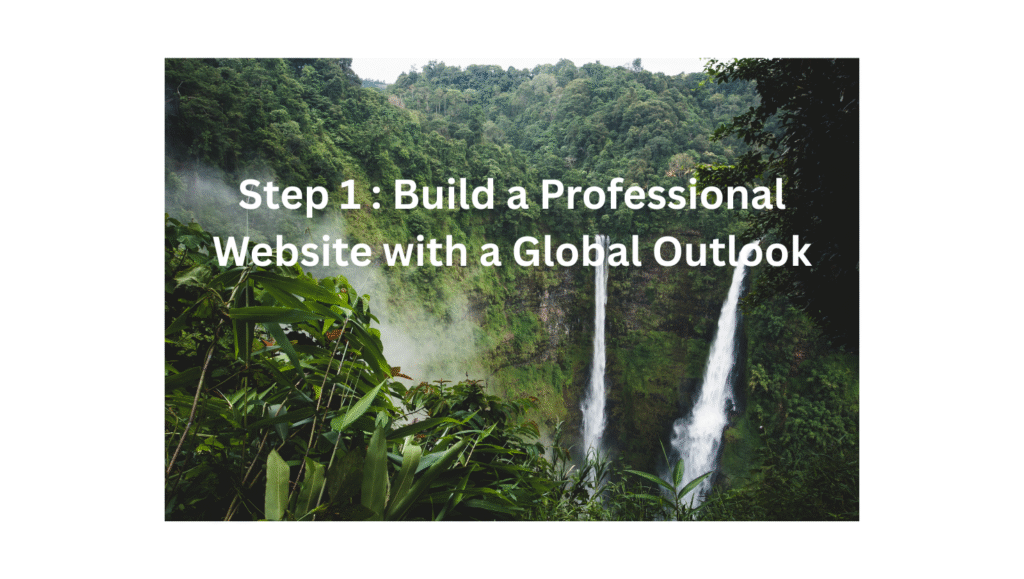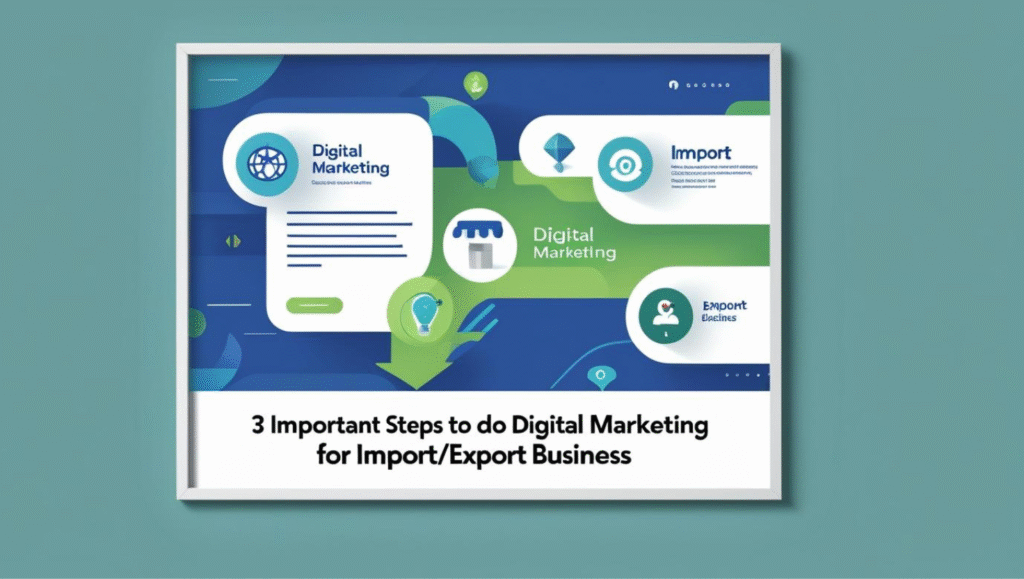In this blog we will see how to do digital marketing for import export business. In today’s interconnected global marketplace, having a strong digital presence is not just an advantage—it’s a necessity for import-export businesses. Whether you’re exporting textiles from India, importing machinery into Africa, or trading food products across continents, digital marketing helps you reach international buyers, build credibility, and close deals faster.
Traditional marketing methods like trade fairs and cold calls are no longer enough. Most global buyers now begin their search online. So, how can you position your business in front of them? Here are three crucial digital marketing steps that every import-export business should focus on:
1. Build a Professional Website Optimized for Global Reach

Your website is the face of your business online. For international clients who have never met you, your website provides the first impression. A poorly designed or outdated website can cause potential buyers to doubt your legitimacy. On the other hand, a clean, professional website builds trust and positions your business as credible and competent.
Key elements your website should include:
- Clear Product Listings: Include high-quality photos, specifications, pricing (if applicable), and downloadable brochures.
- About Us Page: Tell your story, showcase your experience, and highlight any certifications or memberships (like FIEO, DGFT, ISO, etc.).
- Multilingual Support: If you are targeting non-English speaking countries, offer translated versions of your site. This shows respect for local cultures and increases your chances of being found via local search engines.
- Mobile Optimization: A large portion of users—especially in emerging markets—use mobile phones to browse. Ensure your site loads quickly and functions well on all devices.
- Contact Options: Offer multiple ways to connect—email, WhatsApp, inquiry forms, and even video meeting links.
Invest in professional design and UX (user experience). Remember, in global trade, trust is everything, and your website is where that trust begins.
2. Use SEO and Content Marketing to Attract International Traffic
Once your website is live, the next step is making sure it gets seen by the right people. This is where Search Engine Optimization (SEO) comes in. SEO is the process of optimizing your website and content to appear higher in search engine results when people look for your type of products or services.
For an import-export business, international SEO is particularly important. That means:
- Using location-specific keywords, such as “export organic rice from India to UAE” or “import Italian marble in the USA.”
- Creating localized landing pages that speak directly to your audience in each country or region.
- Publishing helpful blog posts that answer common questions your buyers have. Topics could include trade regulations, packaging guidelines, or customs procedures for specific countries.
In addition to SEO, content marketing builds long-term trust. You can publish:
- Industry-specific blog posts
- Explainer videos or product demos
- Case studies and client testimonials
- Whitepapers or trade guides
For example, if you’re exporting spices, a blog titled “Top 5 Spices in Demand in Europe in 2025” can attract interested importers and demonstrate your market knowledge.
3. Leverage B2B Marketplaces and Social Media to Expand Reach
In the B2B (business-to-business) world, visibility is key. To get in front of international buyers, you need to be where they’re looking—which often means online B2B marketplaces and social media platforms.
B2B platforms such as:
- Alibaba
- TradeIndia
- ExportHub
- IndiaMART
- Global Sources
These platforms allow you to list your products, respond to buyer inquiries, and build trust through reviews and certifications. Keep your profile updated, respond to inquiries quickly, and request feedback from satisfied clients.
At the same time, don’t ignore social media, which is becoming increasingly important in global trade. Platforms like:
- LinkedIn: Ideal for connecting with importers, logistics partners, and global distributors. Share updates, company news, and success stories.
- YouTube: Great for product demonstrations, factory tours, or client testimonials.
- Instagram & Facebook: Useful if your products are visually appealing (like handicrafts, fashion items, food products).
Paid advertising on platforms like Google Ads or Facebook Ads can also be used to target buyers in specific countries or industries. For example, a well-targeted ad campaign on LinkedIn can help you reach food importers in Germany if you export spices or agro-products.
Conclusion
Digital marketing gives import-export businesses the tools to scale globally, reach new markets, and stay competitive. In an industry where credibility, speed, and reach matter most, having a strong online presence is not optional—it’s a core business strategy.
To recap, focus on:
- Building a professional, multilingual website that builds trust.
- Investing in SEO and content marketing to attract qualified international traffic.
- Leveraging B2B platforms and social media to engage with potential buyers worldwide.
The digital world moves fast, but with the right steps and consistent effort, your import-export business can grow beyond borders and compete on the global stage.
To know more about this contact us
